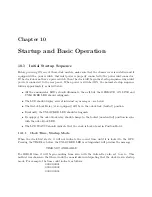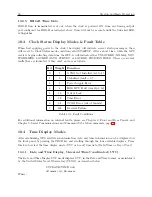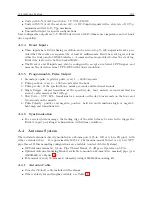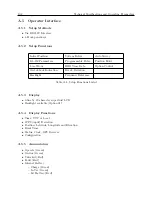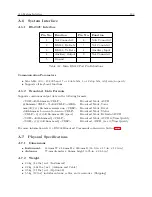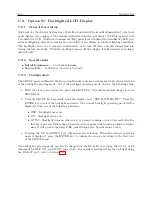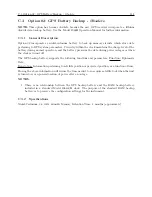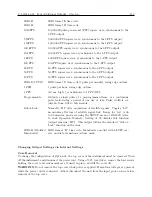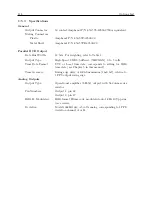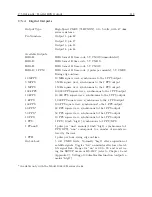
106
Using Surge Arresters
If grounding via the ground-wire screw connection, use the largest possible gauge wire, with
the shortest possible ground path. Hole diameter allows up to 8 AWG wire (0.129 in or 3.26 mm).
This wire should be as short as possible, and connected to a good earth ground.
Alternately, the AS0094500 could be mounted directly to a well-grounded plate within the
facility.
B.3.3
Antenna and Clock Connections
The AS0094500 is labeled to indicate which terminals should be connected to the GPS receiver and
to the GPS antenna. Use only a low-loss, tri-shield or quad-shield 75-ohm coaxial cable – RG-6
or RG-11 are the preferred cable types. RG-59, or other similar types of coaxial cable, should be
avoided due to greater signal loss and poorer shielding at the GPS frequency (1.575 GHz).
B.3.4
Weather Sealing the Connections
To protect from weather, use only type F connectors with appropriate sealing features. Typically
this includes an o-ring in the male connector that seats against the face of the female connector on
the surge arrester. Also, crimped connectors frequently include a silicone gel flooding compound,
which enhances the ability of the connection to withstand the rain and humid conditions. To better
seal the entire connection, cover the joint with GE Silicone II compound.
Use the proper crimping tool if using crimp-on connectors. Improper tools may not guarantee a
strong and sufficiently grounded connector resulting in poor cable performance and GPS reception.
Consider purchasing RF cables of various standard and custom lengths manufactured by Arbiter
Systems.
B.3.5
Suggested Mounting
Figure B.1 illustrates the recommended mounting of the AS0094500 with the F-connectors facing
downward. Install drip loops in the cables to reduce the likelihood of moisture penetrating the
device.
B.4
Physical Dimensions
Overall:
59mm x 38mm x 18mm (2.32in x 1.49in x 0.71in) LxWxH
Mounting Hole Dim:
50mm x 15mm
Mounting Hole Dia:
4mm (0.157in)
F Connector Dim:
24mm, center to center
Weight:
48.2 g (1.7 oz)
Summary of Contents for 1088A
Page 4: ...iv ...
Page 6: ...vi ...
Page 18: ...xviii LIST OF FIGURES ...
Page 23: ...1 4 Attaching Rack Mount Ears to 1088A B Series Clocks 3 Figure 1 2 Attaching Rack Mount Ears ...
Page 24: ...4 Unpacking the Clock ...
Page 32: ...12 Front and Rear Panels ...
Page 38: ...18 Connecting Inlet Power Input and Output Signals ...
Page 46: ...26 GPS Antenna and Cable Information ...
Page 48: ...28 Setting Internal Jumpers Figure 5 1 Model 1088B Main Board ...
Page 76: ...56 The Setup Menus ...
Page 112: ...92 Serial Communication and Command Set ...
Page 127: ...B 4 Physical Dimensions 107 Figure B 1 Suggested Mounting of the AS0094500 Surge Arrester ...
Page 128: ...108 Using Surge Arresters ...
Page 145: ...C 5 Option 04 Parallel BCD Output 125 Figure C 4 Option 04 Output Jumper Settings ...
Page 146: ...126 Options List Figure C 5 Option 04 Board Layout and Jumper Locations ...
Page 166: ...146 Options List Figure C 12 Option 17 Board Layout and Jumper Locations ...
Page 187: ...C 16 Option 20A Four Fiber Optic Outputs 167 Figure C 22 Option 20A Jumper Locations ...
Page 194: ...174 Options List Figure C 24 Option 23 Internal Jumper Setup ...
Page 196: ...176 Options List Figure C 25 Option 27 Jumper Locations ...
Page 214: ...194 Options List Figure C 28 Option 29 Connector Signal Locations ...
Page 270: ...250 Options List ...


